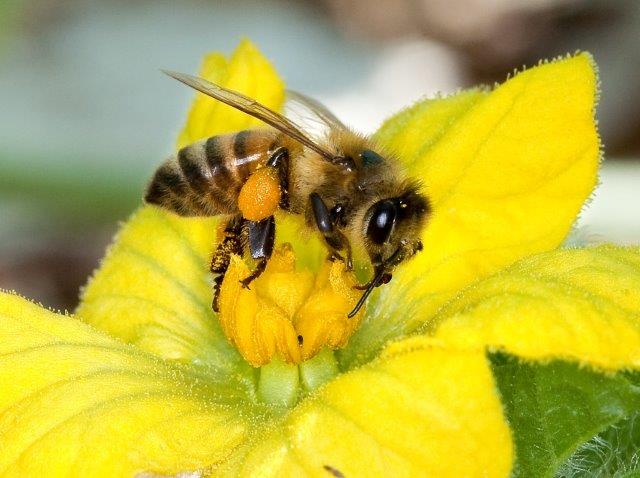USA
July 8, 2015

Scientists are figuring out how neonicotinoids could be contributing to the decline of honey bees. Credit: Stephen Ausmus/USDA
"Quantum Yields for Direct Photolysis of Neonicotinoid Insecticides in Water: Implications for Exposure to Nontarget Aquatic Organisms"
Environmental Science & Technology Letters
The decline of honey bees has been a major concern globally for the past decade. One of the factors that could be contributing to the decline is the use of insecticides — specifically neonicotinoids — that persist in rivers and streams. Researchers now report in the ACS journal Environmental Science & Technology Letters that although sunlight plays an important role in degrading pollutants, its effects on neonicotinoids can diminish dramatically even in shallow water.
Neonicotinoids protect crops from pests, such as whiteflies, beetles and termites. They are a popular tool in a farmer’s arsenal, but they end up washing into surface waters and soil. Some research has suggested the insecticides play a role in the disappearance of bees, a phenomenon known as colony collapse disorder. But scientists didn’t fully understand the fate of neonicotinoids in the environment, an important factor in determining how they might contribute to the disorder. Charles S. Wong and colleagues wanted to investigate sunlight’s effects on these insecticides in water.
Out of five neonicotinoids the researchers tested in water under simulated sunny conditions, three degraded considerably within minutes. Two took a few days to break down. But a depth of just 3 inches of water was enough to shield at least one, thiamethoxam, from the degrading effects of the sun. The researchers say that this persistence at shallow depths could increase the chances aquatic life and other wildlife, including bees, could get exposed to the insecticide.
The authors acknowledge funding from the Natural Sciences and Engineering Research Council of Canada, the University of Manitoba and the Canada Research Chairs Program.